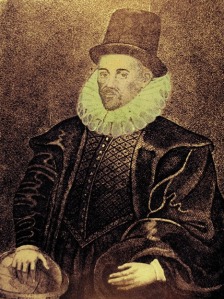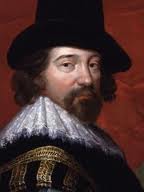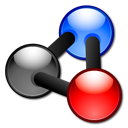Posts Tagged Elizabeth I
PARACELSUS (1493-1541)
Posted by historyofscience101 in ALCHEMY, CHEMISTRY, HISTORY OF SCIENCE, SIXTEENTH CENTURY, THE MIDDLE AGES, TIMELINES on August 31, 2013
Europe – early sixteenth century
Added salt to the mercury/sulfur diad, making a trinity to match the holy trinity
Elaborating his writings with occult mystery, Theophrastus von Hohenheim renamed himself Paracelsus and helped to reform medicine by making it chemical.
Many of his ideas were erroneous and his writings were deliberately obscure; he insisted that the ‘doctrine of signatures’ could reveal efficacious drugs for different organs. Proclaiming that specific therapies could counter a particular disease was a radically different approach to the Aristotelian attempts to rebalance an individual’s internal humors.
Paracelsus extended the ‘fundamental qualities’ of the four Aristotelian elements by adding a third ‘hydrostatic principle’ to the diad of J’BIR IHBIN AYAM – saying the material manifestation of the ancient elements ( ‘…everything that lies in the four elements’ ) may be reduced to mercury, sulfur and salt.
The first distillate of an organic substance would be the thin, volatile ‘mercury’, which acted in favour of youth and life while next came the ‘sulfur’, acting in favour of growth and increase. Finally, the dry mass left behind was the ‘salt’. The concept of these three principles was considered a slight advance upon that of the four elements.
These are not the same things as we recognize today, nor elements in their own right; the first two were components of metals, salt was a principle common to all living things.
The Royal physicians of Elizabeth I of England and Henry IV of France assimilated and adapted Paracelsus’s ideas and although his theories lost credibility, his chemical remedies entered mainstream medicine.
JOHN DEE (1527-1608)
Posted by historyofscience101 in ALCHEMY, ASTROLOGY, HISTORY OF SCIENCE, MATHS, SIXTEENTH CENTURY, THE MIDDLE AGES, THE STARS, TIMELINES, WESTERN SCIENCE & THEOLOGY on August 24, 2013
1590 – London, England
Mathematician, cartographer & astronomer.
Prolific author, natural magician, alchemist
‘Alternative knowledge and methods of learning. ‘Conversations with Angels’. Human power over the world (neo-Platonism).’
Dee was a Hermetic philosopher, a major influence on the ROSICRUCIANS, possibly a spy – astrologer and adviser to Queen Elizabeth I ; he chose the day of her coronation.
One of the greatest scholars of his day. His library in his home in Mortlake, London, contained more than 3,000 books.
Greatly influenced by Edward Kelley (1555- 97), whom he met in 1582; from 1583-1589 Dee and Kelley sought the patronage of assorted mid-European noblemen and kings, eventually finding it from the Bohemian Count Vilem Rosenberg.
In 1589, Dee left Kelley to his alchemical research and returned to England where Queen Elizabeth I granted him a position as a college warden, but he had lost respect owing to his occult reputation.
Dee returned to Mortlake in 1605 in poor health and increasing poverty and ended his days as a common fortune-teller.
WILLIAM GILBERT (1540-1603)
Posted by historyofscience101 in ELECTROMAGNETISM, HISTORY OF SCIENCE, MAGNETISM, SEVENTEENTH CENTURY, TIMELINES on August 24, 2013
1600 – England
Gilbert’s principal area of study related to magnetism, however, his method of enquiry is equally significant
Gilbert rejected the scholastics’ approach to science, preferring the experimental method, which he applied to the Earth’s magnetic properties.
He carried out some of the first systematic studies of the lodestone in Europe and showed that the Earth acts as a bar magnet with magnetic poles.
His celebrated work,’De magnete, magnetisque corporibus, et de magno magnete tellure‘ (On the Magnetic, Magnetic Bodies and the Great Magnet Earth – 1600) is considered to be one of the first truly scientific texts.
Gilbert received his medical training in Cambridge and practiced as a physician in London. He became president of the College of Physicians and was physician to Queen Elizabeth I.
In the time of Elizabeth I and Shakespeare, England was still largely a place of superstition and religious fervor. Gilbert concurred with Copernicus, a potentially dangerous sentiment in an era when elsewhere in Europe others such as Giordano Bruno and later GALILEO were being persecuted (and in the case of Bruno, executed) for sharing the same opinion.
Magnetism was to cast its influence in the eighteenth century, displayed through the animal magnetism and the electric fluid of GALVANI and VOLTA.
He distinguished the properties of magnetism from the attractive effect produced by friction with amber. In so doing he introduced the term that was to become electricity.
Gilbert introduced a number of expressions to the English language including: magnetic pole, electric force and electric attraction.
A term of magneto-motive force, the gilbert, is named after him.
Gilbert and others postulated that magnetism is the force holding the planets in their orbits.
FRANCIS BACON (1561-1626)
Posted by historyofscience101 in HISTORY OF SCIENCE, INDEX, SEVENTEENTH CENTURY, TIMELINES on August 23, 2013
1620 – England
Scientific laws must be based on observations and experiments
Bacon rejected ARISTOTLE‘s deductive or a priori, approach to reasoning and suggested his own, inductive, or a posteriori, approach. Bacon developed the scientific method – but he did not make any significant scientific discovery.
‘I shall content myself to awake better spirits like a bell-ringer, who is first up to call others to church’
Bacon, a philosopher, advocated a new method of enquiry, completely different from the philosophical methods of the ancient Greeks, in his book Novum Organum – which has influenced scientists since its publication in 1620.
The text proposed the sentiment of ‘The Advancement of Learning’ (1605) signaling dissatisfaction with the limits of, and approaches to, knowledge to date and foresaw a future where the ancient masters would be far surpassed – Aristotle had written a text called Organum or ‘Logical Works’ and Bacon’s ‘new’ approach suggested an alternative direction for scientific study.
Bacon strongly criticised Aristotle’s deductive method of science, which involved formulating abstract ideas and ‘logically’ building upon them step-by-step to find ‘truths’, without thorough consideration of whether the theoretical foundation in itself was ever valid.
Rather than rely on superstition or accept unquestioningly the flawed solutions of the ancient academics as had largely been the case for two thousand years, Bacon’s alternative was to argue for ‘inductive’ reason, where the only ‘certain’ statements that should ever be made were based on observation and proof collected from the natural world. The essence of his method is to collect masses of data by observations and experiments, analyse facts by drawing up tables of negative, affirmative and variable instances of the phenomenon ( ‘Tables of Comparative Instances’ ), draw (induce) hypotheses from the evidence, then to collect further evidence to proceed towards a more general theory. The most important aspect of this method was the idea of drawing up tentative hypotheses from available data and then verifying them by further investigations.
‘A true and fruitful natural philosophy has a double scale or ladder ascendant or descendant, ascending from experiments to axioms and descending from axioms to the invention of new experiments’, he wrote in Novum Organum.
Bacon cautioned those trying to practice his new method, urging them to repudiate four kinds of intellectual idol
- Perceptual Illusions – ‘idols of the tribe’
- Personal biases – ‘idols of the cave’
- Linguistic confusions – ‘idols of the market place’
- Dogmatic philosophical systems – ‘idols of the theatre’
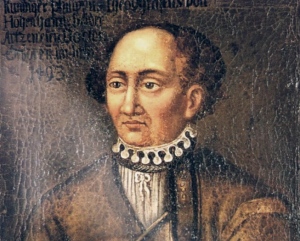
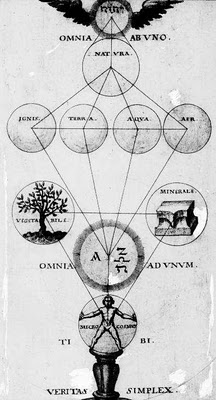

 TIMELINE
TIMELINE
